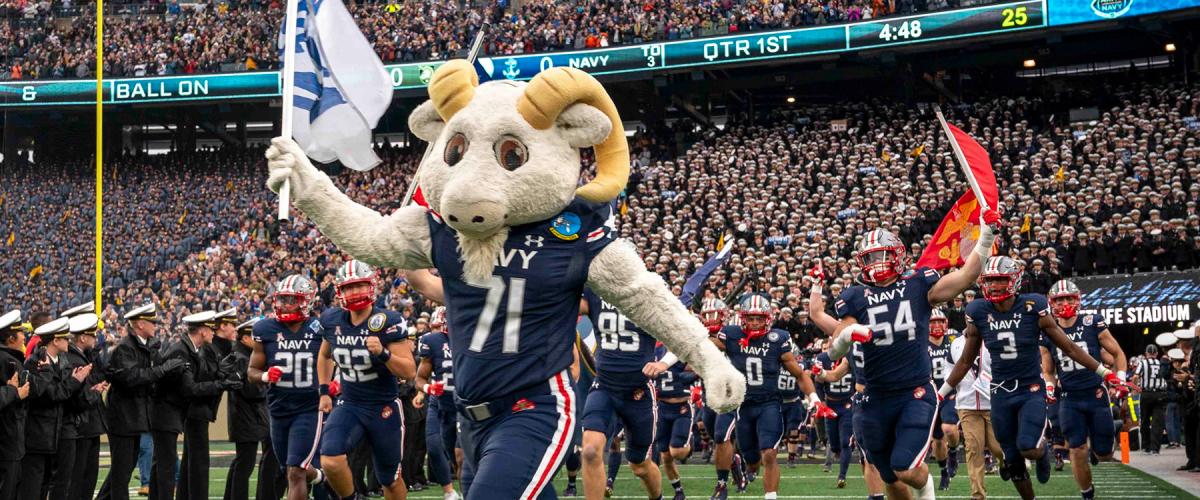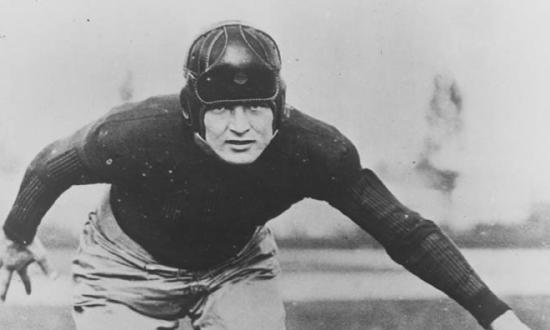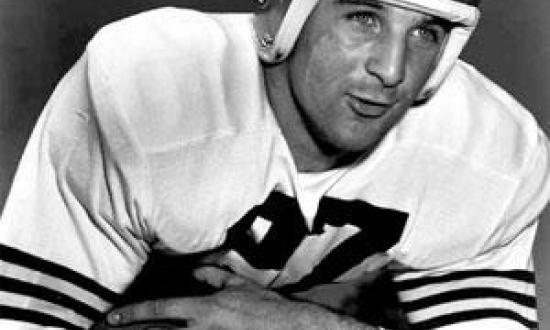Mascots for sports were introduced to both the U.S. Naval Academy and U.S. Military Academy in the 19th century. In those days, goats and other livestock were kept on board ships as sources of meat, eggs, and milk. In some cases, the animals became pets. According to Naval Academy legend, on one voyage, a goat’s life was spared because it had become a valued pet. When it died later while still at sea, the officers kept the hide to commemorate that pet goat because it had been so well liked.
After the ship docked in Baltimore, Maryland, two ensigns were taking the hide to a taxidermist when they decided to make a detour to Annapolis to watch a Navy football game. They soon became disappointed, because Navy was losing. Inspired to help his team win, one of the ensigns wrapped himself in the goat hide and began frantically racing around the stadium to rally the crowd. Such antics brought howls of laughter from the Midshipmen. After such a display, Navy won the game, and the deceased-goatskin incident was given the credit.
In other words, even the hide brought luck to the team, and that deceased goat became the symbol of the Navy’s tough, warrior mentality.
That first Army-Navy game was played in 1890 at West Point and the second at Annapolis one year later. Philadelphia’s Franklin Field soon became the chosen game site. This “City of Brotherly Love,” hosted all the early games. Lately, there have been 14 other locations that have hosted these events.
In 1893, at the fourth Army-Navy game, a live goat mascot was introduced—and Navy won 6-3. The goat was good luck, and the goat was here to stay. In the early 1900s, the goat (and all his successive heirs to the mascot mantle) was given the name of Bill.
One of these early Bills was renamed “Three-to-Nothing Jack Dalton” after star Midshipman Dalton kicked the field goals that helped Navy defeat Army 3-0 for two successive years.
Early on in the longstanding interservice rivalry, West Point realized it needed some mascot-magic of its own to counter the Naval Academy’s goat. And so it was that, in 1899, West Point’s mule mascot made his debut at the game—a natural choice, because of the mule’s traditional usefulness in military operations. A white mule used to pull an ice cart was assigned the role. But it wasn’t until 1936 that the Army had an official mascot—a retired Army pack mule dubbed “Mr. Jackson.”
In 1939, a second mule arrived named “Pancho,” sometimes called “Skippy.” This animal was an Ecuadorian burro, a smaller-sized animal. In the 1942 game, Pancho was disguised as the Navy goat with a hide and horns. A rider was dressed in a Midshipman’s uniform. This was done to make it appear that someone was riding Bill the Goat into the game. Imagination was used by both teams to encourage participation in creating interest in and attendance to the games.
In 1964, “Buckshot,” the only female in the long line of mule mascots, arrived at West Point. She was a gift from the U.S. Air Force Academy
A ten-member Navy team handles the transportation of its goats to and from games. They also care for the goats, taking them to the veterinarian and to public appearances. One person described these goats as “gnarly.” Evidently, they do not especially enjoy public appearances. Whether they are trained in any way is confidential.
Army and Navy have competed in more than 121 games. Recently, the the Navy has had 61 wins; the Army has had 53. Seven games ended in ties. The teams generally play their games east of the Mississippi River. However, in 1983, the Rose Bowl hosted the game.
It is amazing that during this long time of playing together, the teams only missed playing ten games. Between 1894 and 1898, an argument between an Army general and a Navy admiral almost resulted in a duel between the two after the 1893 game.
The game wasn’t played in 1909 when the Army canceled its remaining games after Cadet Eugene Byrne died from an injury sustained in an October game against Harvard.
Of course, in 1917 and 1918, during World War I, games were canceled on orders from the War Department. In 1928 and 1929, the academies did not reconcile player-eligibility standards.
(Nimitz Library Special Collections & Archive)
It was only fitting that a game was held in Chicago for the dedication of Soldier Field in honor of American servicemen who fought in World War I. In the 1944 and 1945 games, Army and Navy were ranked No. 1 and No. 2. During that time, the Army won both games.
After the games, players sing both teams’ alma mater songs. The winning team joins the losing team and sings, facing the losing team’s student population. The losing team then joins the victors on their side of the field and sings the winner’s alma mater to their students. These actions demonstrate good sportsmanship and a mutual respect and solidarity between the opposing teams, as well as good citizenship.
Mascots encourage support and provide more connections to the community. They are also symbols of history and tradition. This bond to tradition lasts long after any particular game is played; over time, the traditions have brought increased interest in the Army-Navy game and have added to its legendry and lore.
This year’s Army-Navy game is being played in Boston in honor of the 250th anniversary of the Boston Tea Party and the 225th anniversary of the USS Constitution’s maiden voyage. Upcoming games will be held in Washington, DC, in 2024, Baltimore in 2025, New York/New Jersey in 2026, and Philadelphia in 2027.
The Army-Navy Game is America’s game. It has become special to many who served in the armed forces. In these games, the players demonstrate their dedication and hard work for all observers. These morale-booster events influence those who served and those in active service. For current Midshipman and Cadets, and for all those who came before and still thrill to the Big Game, it represents a sense of pride, an appreciation of legacy, and a dedication to their country.









